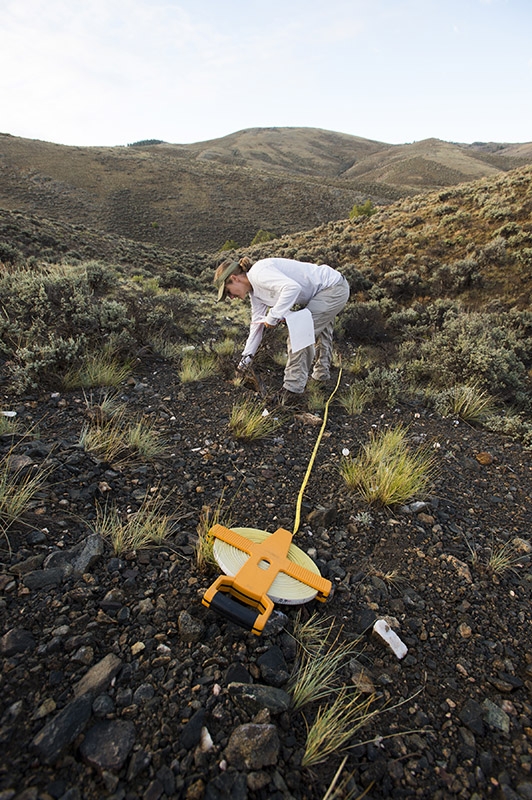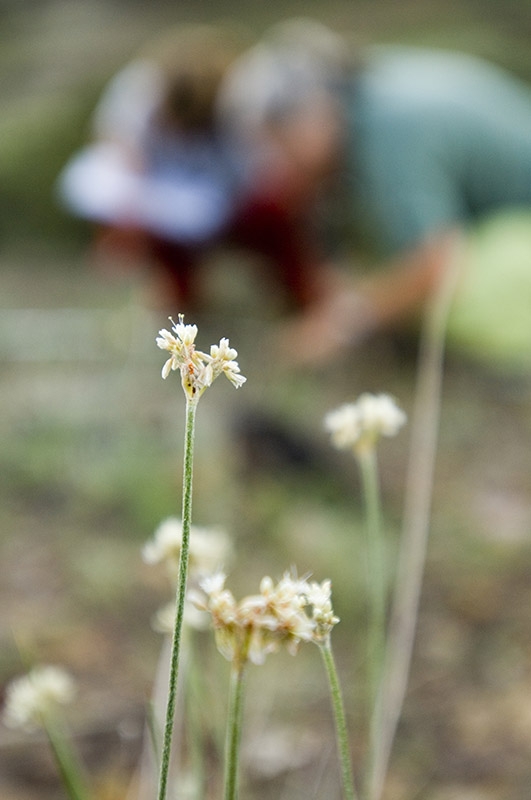Rare Plant Monitoring
What will the future hold for the rare and imperiled plants of Colorado?
When projections are dire, efforts can be made to protect a species in several ways:
• It could be petitioned to be added to the Endangered Species Act list of threatened or endangered species.
• Federal land managers that steward populations may increase efforts to remove threats such as noxious weeds and create a buffer from development or recreation.
• Members of the Center for Plant Conservation (including Denver Botanic Gardens) may collect and store seed that could be used to bolster declining populations or bring a species back from the brink of extinction.

Image caption: Monitoring Astragalus microcymbus, a species we have been monitoring for 25 years.
Prioritizing and determining needed actions to conserve a rare plant species takes a lot of data and a large effort to create thoughtful and meaningful management plans, which often include modeling populations and climate. Species respond to environmental changes, interactions with other species and past conservation actions by expanding or contracting their ranges as conditions improve or decline.
Understanding how rare plant populations respond to variable environments and pressures combined with our best understanding of future climate predictions allow us to make a prediction of how a species will respond to future conditions and which possible actions may be most effective to reverse downward trends.

Image caption: Eriogonum brandegeei, a species we have been monitoring for 13 years.
Though somewhat hampered by the current pandemic, Denver Botanic Gardens continues to collect annual data on how several rare Colorado endemic plants are faring over increasingly variable climates. Visiting the populations to take data on hundreds of individual plants is a time consuming and thoroughly enjoyable part of the process but there is also beauty in the resulting models and predictions we can make. Additional data makes the predictions stronger, allowing us to plan and practice better conservation of these rare plants.
Add new comment